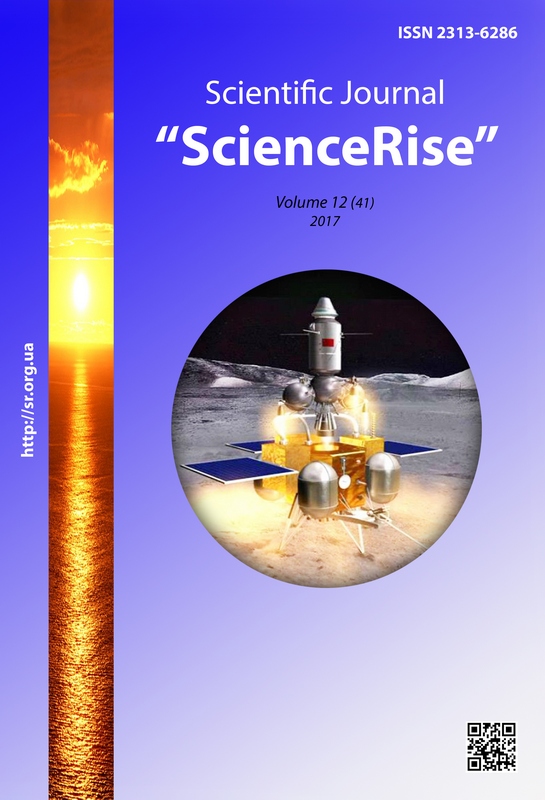Method of converting a set of possible solutions in the theory of decision-making
DOI:
https://doi.org/10.15587/2313-8416.2017.118284Keywords:
decision theory, multi-criteria problem, set of possible solutions, convex hullAbstract
The problem of multi-criteria choice is considered in the paper, which are first reduced to single-criterion and then to the linear programming problem. For the effective solution of the problem provides a method of converting a set of possible solutions (the corresponding domain of admissible solutions) by eliminating from consideration deliberately unpromising alternatives with the opportunity to further their directional search. Numerical results of algorithm work are given in the presence of three to five criteria
References
Poltavskiy, A. В., Semenov, S. S., Burba, A. A. (2014). Metody prinyatiya resheniy pri razrabotke obyektov slozhnykh tekhnicheskikh sistem [Methods of making the devlopment of objects complex technical systems]. Dual technologies, 3 (68), 38–46.
Optner, S. A. (1969). Sistemnyy analiz dlya resheniya delovykh i promyshlennykh problem [System analysis for solving business and industrial problems]. Moscow: Soviet radio, 216.
Samarskyi, A. A., Mihailov, A. P. (2001) Matematicheskoye modelirovaniye: Idei. Metody. Primery [Mathematical Modeling: Ideas. Methods. Examples]. Moscow: Fizmatlit, 320.
Urubkov, A. R., Fedotov, I. V. (2011). Metody i modeli optimizatsii upravlencheskikh resheniy [Methods and models for optimizing management decisions]. Moscow: Delo ANKH, 240.
Churakov, E. P. (2004). Matematicheskiye metody obrabotki eksperimental'nykh dannykh v ekonomike [Mathematical methods for processing experimental data in the economy]. Moscow: Finance and Statistics, 240.
Geoffrion, A. M., Dyer, J. S., Feinberg, A. (1972). An Interactive Approach for Multi-Criterion Optimization, with an Application to the Operation of an Academic Department. Management Science, 19 (4), 357–368. doi: 10.1287/mnsc.19.4.357
Rosenberg, R. (1967). Simulation of genetic populations with biochemical properties. Ann Arbor: University of Michigan.
Nogin, V. D. (2008). Problema suzheniya mnozhestva Pareto: podkhody k resheniyu [The problem of narrowing the Pareto set: approaches to solving]. Artificial Intelligence and Decision Making, 1, 98–112.
Sobol, S. M., Statnikov, R. B. (2006). Vybor optimal'nykh parametrov v zadachakh so mnogimi kriteriyami [The choice of optimal parameters in problems with many criteria]. Moscow: Drofa, 175.
McMullen, P., Shephard, G. (1971). Convex Polytopes and the Upper Bound Conjecture. Cambridge: Cambridge University Press.
Gil, N. I., Sofronova, M. S. (2009). Ob odnom podkhode k postroyeniyu vypukloy obolochki konechnogo mnozhestva tochek v Rn [On an approach to the construction of the convex hull of a finite set of points in Rn ]. Artificial intelligence, 4, 30–36.
Downloads
Published
Issue
Section
License
Copyright (c) 2017 Micola Pogozhikh, Marina Sofronova, Dmitry Panasenko

This work is licensed under a Creative Commons Attribution 4.0 International License.
Our journal abides by the Creative Commons CC BY copyright rights and permissions for open access journals.
Authors, who are published in this journal, agree to the following conditions:
1. The authors reserve the right to authorship of the work and pass the first publication right of this work to the journal under the terms of a Creative Commons CC BY, which allows others to freely distribute the published research with the obligatory reference to the authors of the original work and the first publication of the work in this journal.
2. The authors have the right to conclude separate supplement agreements that relate to non-exclusive work distribution in the form in which it has been published by the journal (for example, to upload the work to the online storage of the journal or publish it as part of a monograph), provided that the reference to the first publication of the work in this journal is included.

